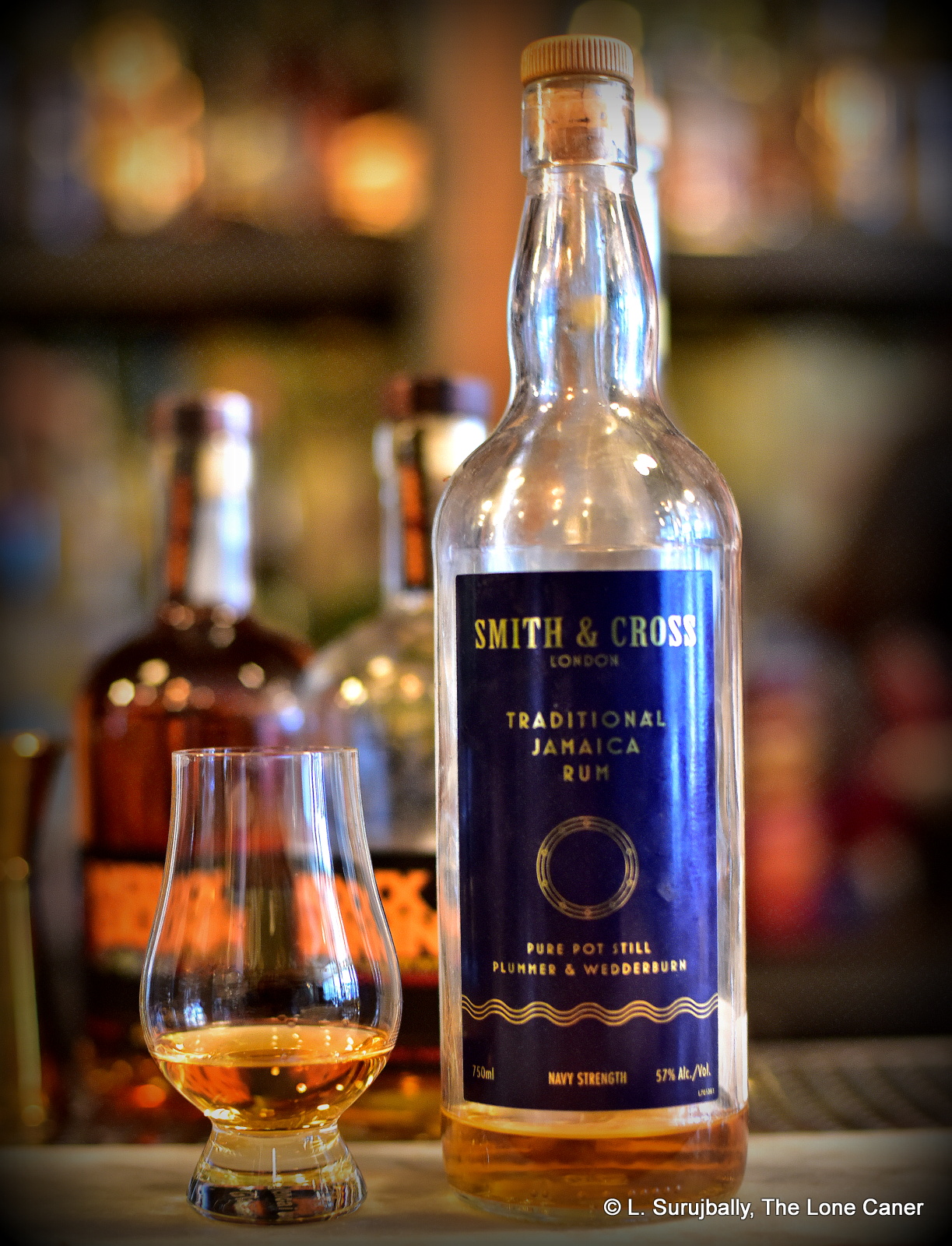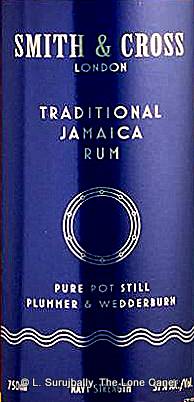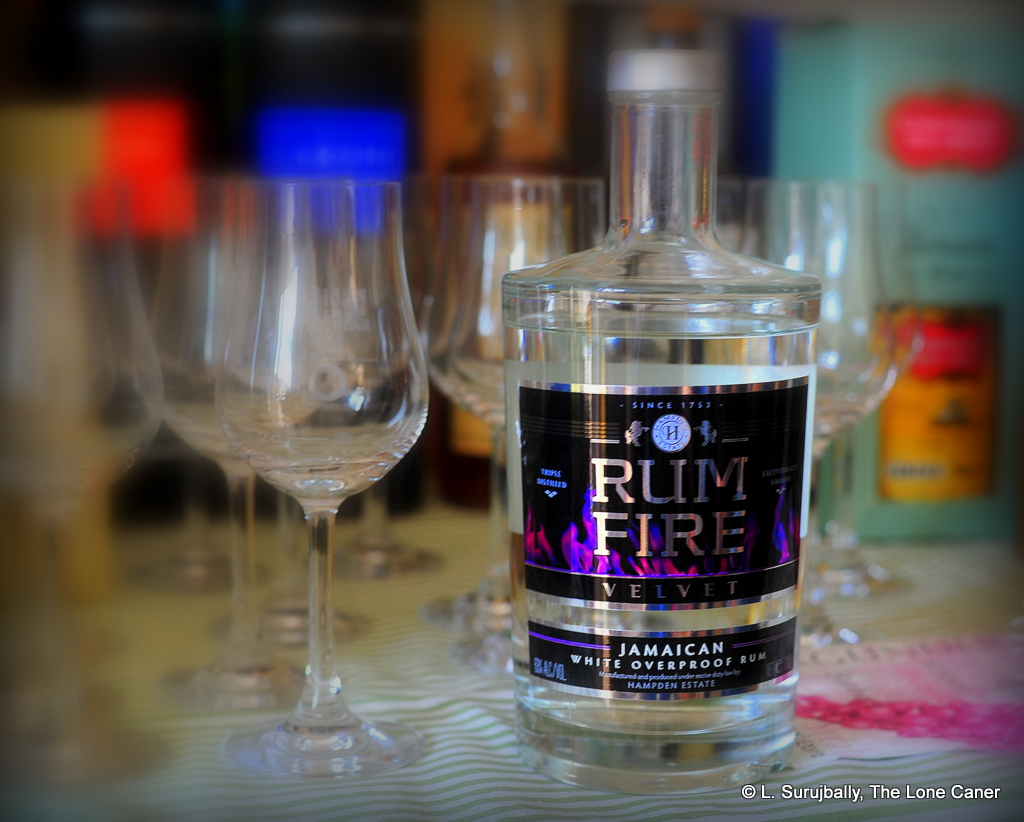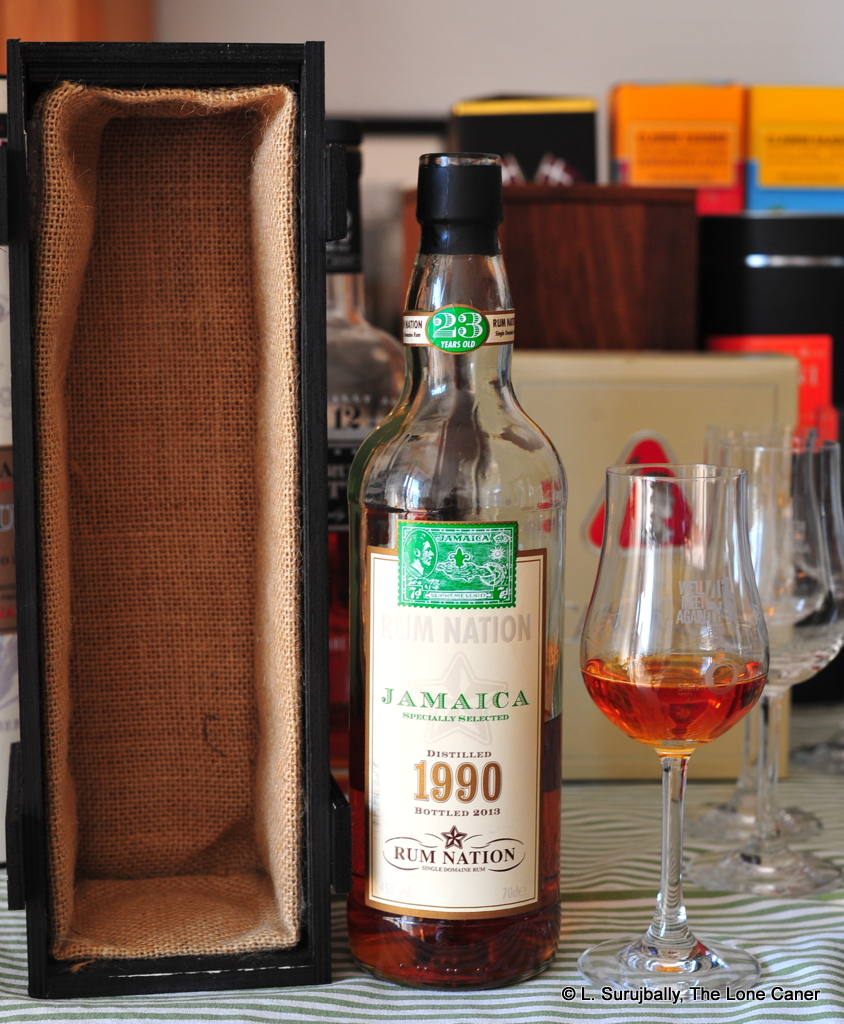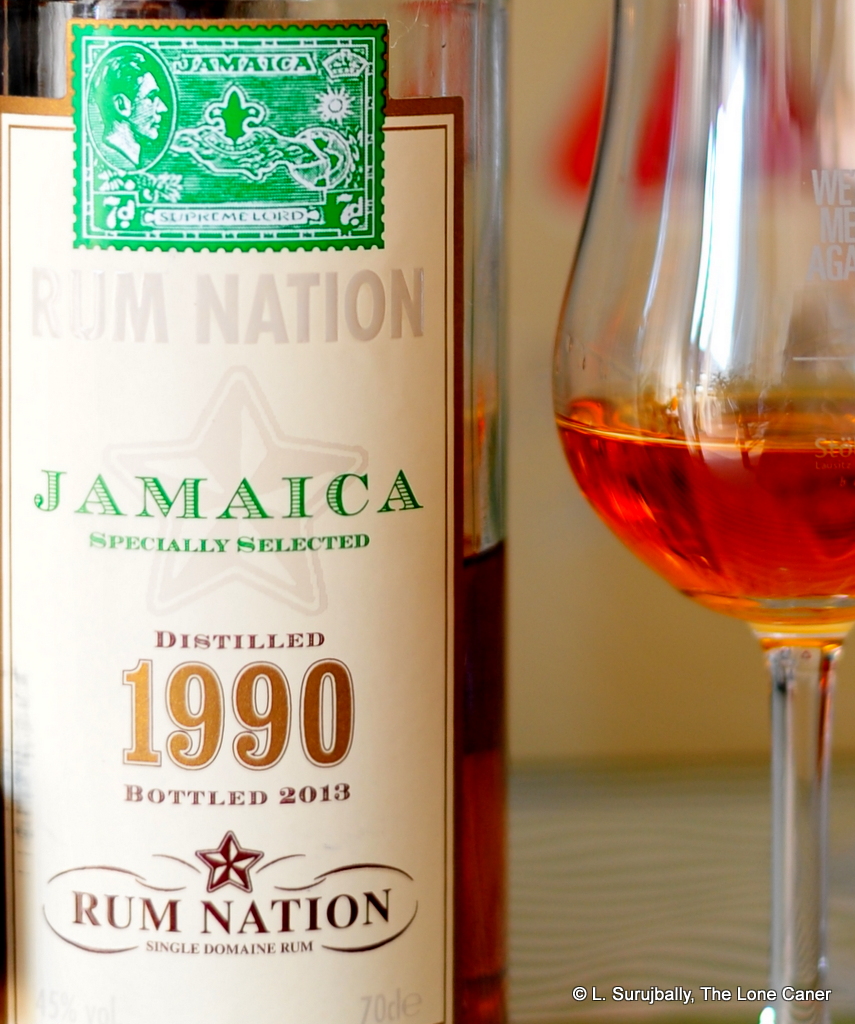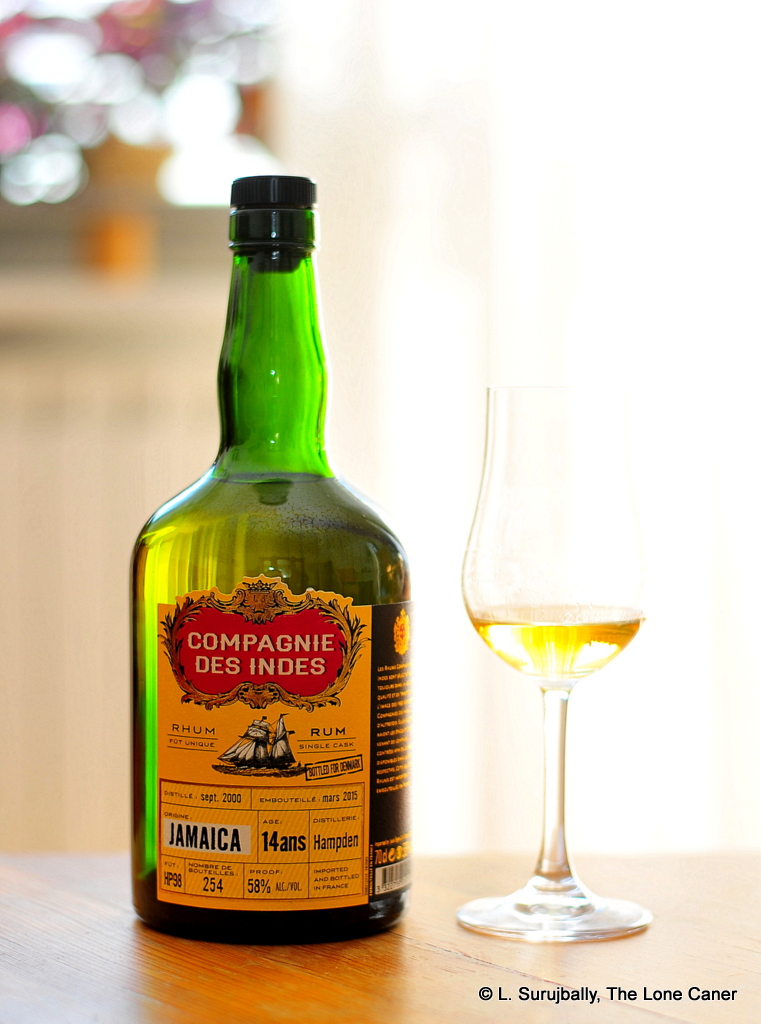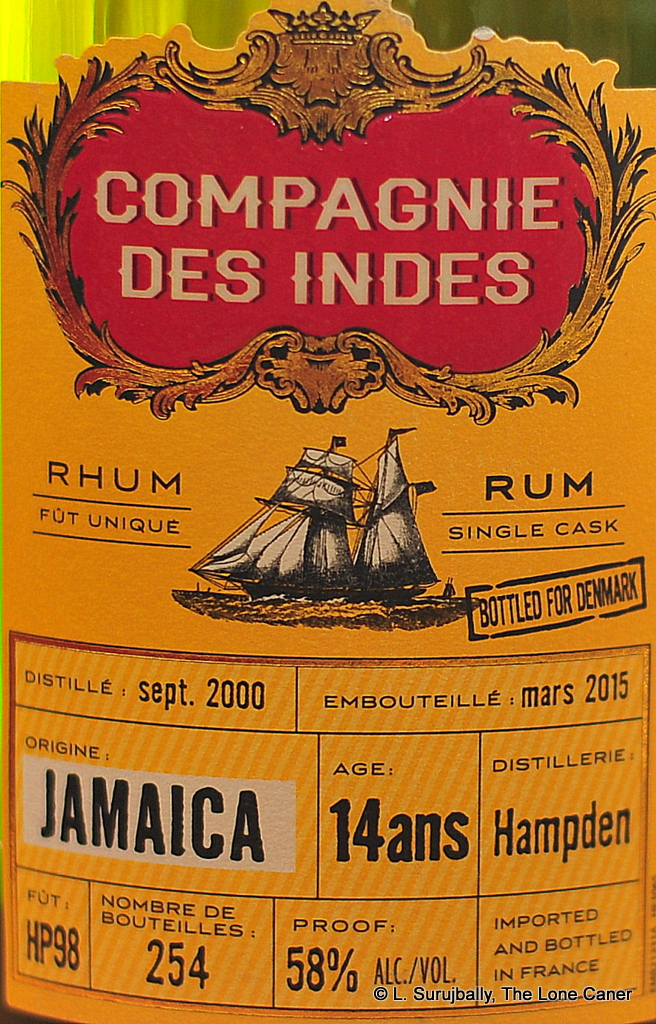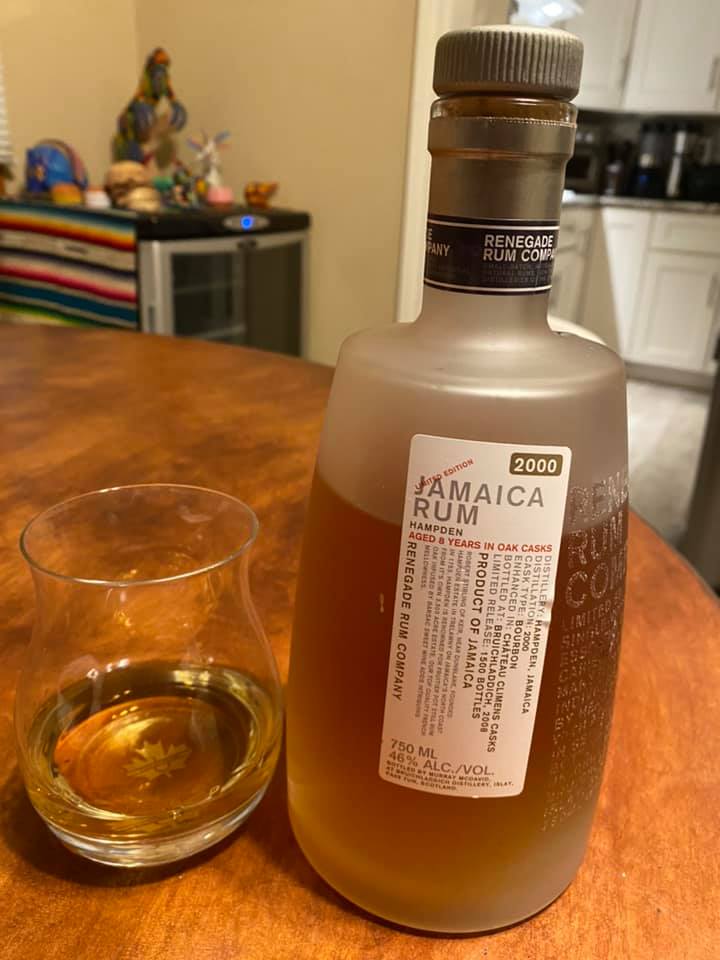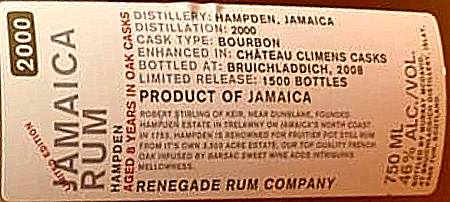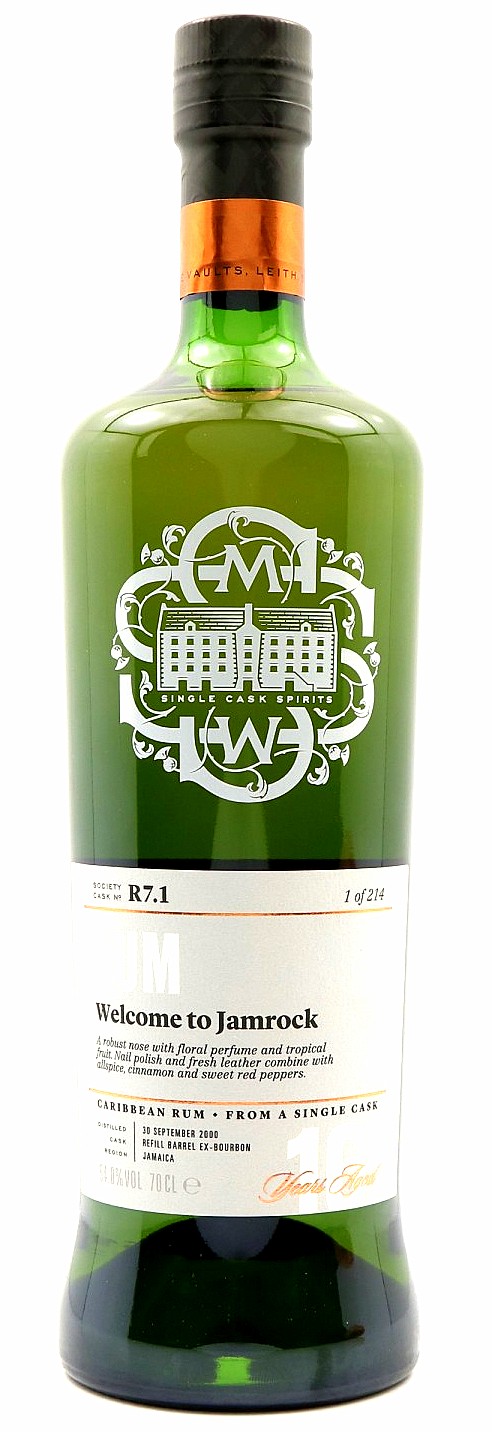 Sooner or later, no matter what the SMWS thought the Big Gun Rums deserving of their own Big Green Bottle were, they had to come here, to Release 7.1 of the vaunted and much ignored “R” (rum) series. By 2016 when it was put on sale for the membership, they had rums from Guyana (DDL), Jamaica (Monymusk and Longpond), Barbados (WIRD) and Trinidad (Providence)…and that was it. And even if you’re not in to rums – or weren’t, six years ago – it’s clear there’s just a whole lot missing there, which could have buffed and burnished the SMWS’s sadly lacking rum department.
Sooner or later, no matter what the SMWS thought the Big Gun Rums deserving of their own Big Green Bottle were, they had to come here, to Release 7.1 of the vaunted and much ignored “R” (rum) series. By 2016 when it was put on sale for the membership, they had rums from Guyana (DDL), Jamaica (Monymusk and Longpond), Barbados (WIRD) and Trinidad (Providence)…and that was it. And even if you’re not in to rums – or weren’t, six years ago – it’s clear there’s just a whole lot missing there, which could have buffed and burnished the SMWS’s sadly lacking rum department.
However, after three years’ of zero rum outturn, perhaps somebody was finally waking up, because in that year nine rums came out, and four new distilleries were added — Nicaragua’s Flor de Cana (R8), Trinidad’s Angostura (R10), Barbados’s Foursquare (R6)…and Hampden Estate’s R7. Which is nice, though it would be hard to explain why Worthy Park was ignored (they were allocated R11 a year later), where St. Lucia’s Distillery was (and is), and why every single agricole has yet to be given a spot alongside sterling rums from points around the globe.
Well, never mind. The important thing is that they finally got around to adding one of the real and enduring stars of the rum scene, Hampden Estate, which had already and quietly started to make waves in the rum and whisky worlds via independent bottlers’ offerings and various spirits festivals (they would begin the release their own estate bottlings in 2018). Certain years of Hampden’s bulk sales always seem to come up as touchstones – 1992 was one such, with the superlative pair of the Samaroli’s 24 YO and the 25 YO being examples of the possibilities, and 1990 and 2000 both had some pretty good rums from Berry Bros, Rum Nation, CDI, Renegade and SBS. In twelve years of constant writing, I’ve never found a Hampden dog.
This one is no exception. Distilled in 2000 and bottled in 2016 for release in 2017, it’s a 54% sixteen year old cultured bruiser with an outturn of 214 bottles, and even if it doesn’t say so, the marque is an LROK “Common Clean”, which places it in the pleasantly mid- to low-range of the ester charts (and therefore provides you with the advantage of not requiring expensive insurance against having your face ripped off, as you would with a full-powered DOK sporting off-road tyres). It is, of course, pot still made, and aged in ex-Bourbon casks.
Just about every reviewer of SMWS rums (and even some of the whiskies) likes to repeat the old trope that they (a) find the odd names of the spirits incomprehensible and (b) ignore those peculiar tasting notes that are on the label. You can sort of see the point since “Welcome to Jamrock” is not exactly clear to those genuflecting to The Queen’s. Me, I read the entire label (including the warnings) and just smile and enjoy the sense of irreverent humour at play. The truth is, though, the rum is weird, it is odd, and I think it took some courage to release back before Hampden gained the street cred it did after 2018, and people got more used to the profile.
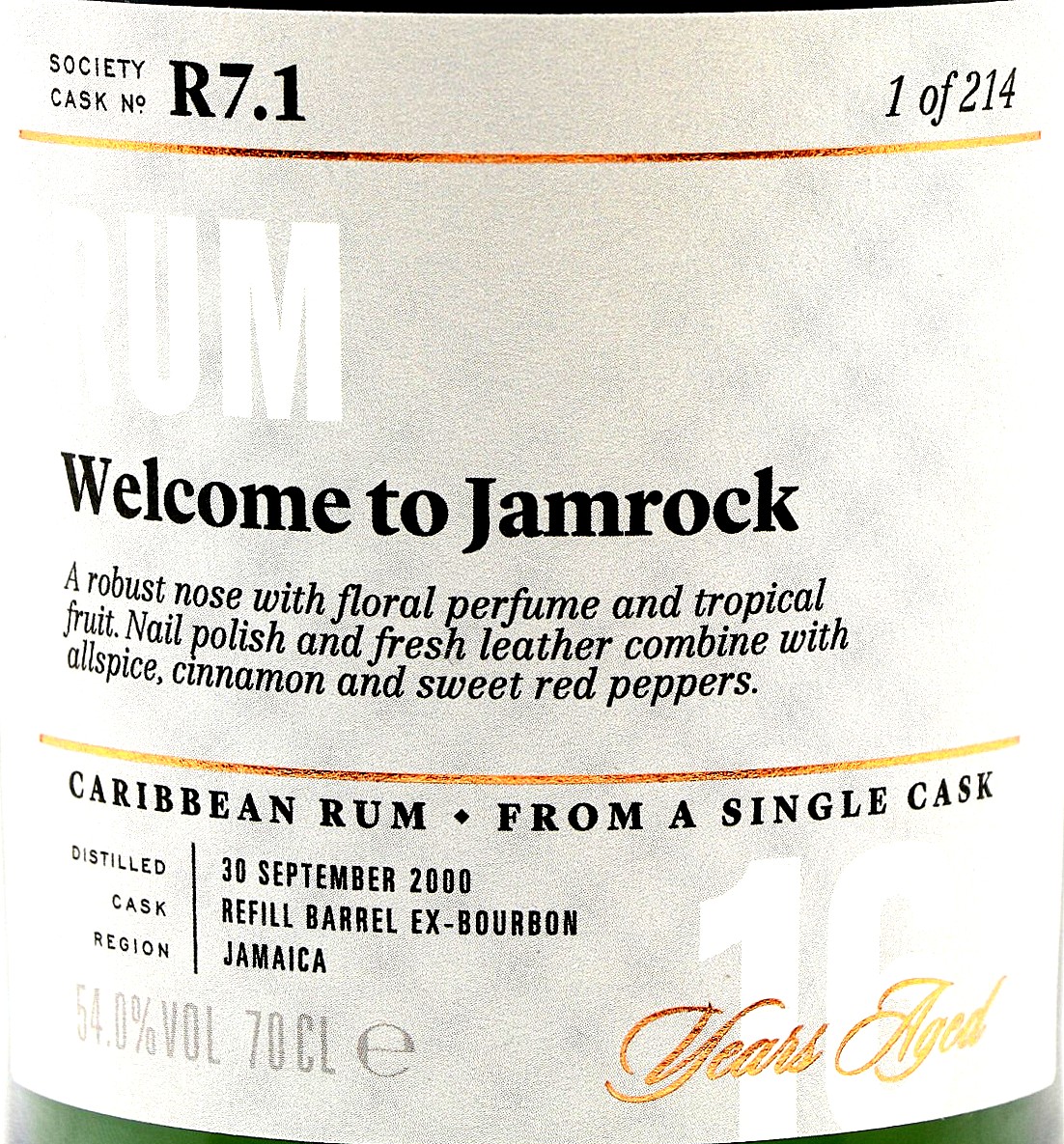 Consider: the nose opens up with the scent of hot porridge to which has been added a pinch of salt and a pat of melting butter. To this is then brought caramel, toffee, and the dry smell of cracked plaster and mouldy drywall in an old and dusty house. And then we also start getting olives in spicy vinegar, delicate flowers, cherries in syrup, figs, a little bitter chocolate, marmalade with a little red-pepper attitude – it’s oddball to a fault, it’s strange and it’s peculiarly tasty, and I haven’t even gotten to the second best thing about it. Which is the gradual intermingling of herbs, grasses, marigolds and a trace of sandalwood, with cinnamon, cumin and citrus juice, all doused with aromatic tobacco (and if this sounds like a lot, it’s because, well, it is.)
Consider: the nose opens up with the scent of hot porridge to which has been added a pinch of salt and a pat of melting butter. To this is then brought caramel, toffee, and the dry smell of cracked plaster and mouldy drywall in an old and dusty house. And then we also start getting olives in spicy vinegar, delicate flowers, cherries in syrup, figs, a little bitter chocolate, marmalade with a little red-pepper attitude – it’s oddball to a fault, it’s strange and it’s peculiarly tasty, and I haven’t even gotten to the second best thing about it. Which is the gradual intermingling of herbs, grasses, marigolds and a trace of sandalwood, with cinnamon, cumin and citrus juice, all doused with aromatic tobacco (and if this sounds like a lot, it’s because, well, it is.)
Once we get to the pour and the palate, though, the rum gets down to business, stops with the fancy stuff and hauls out the happy slapper. The good stuff slides right off and it becomes a full-out badass, starting off with new paint, medicinals, a sort of minerally tang, and the crackling flash of ozone like an electrical fire’s after-smell. There’s the disused taste of a second hand store’s sad and expired dust-covered back shelf wares here. Paprika and black pepper, more of that vague pimento and tobacco taste, bell peppers, chocolate oranges, strawberries, even a touch of brown sugar and toffee, plus a smorgasbord of mashed-together fruits one can no longer separate. The finish is really good, by the way – it’s fruity, estery, slightly bitter, crisp, dry and has a flirt of nail polish, oakiness, bitter chocolate, caramel and campfire ashes about it, and is one to savour.
All this, from a wrong on the wrong side of 60%. It’s amazing, it spreads carnage in all directions, but so politely that you can’t help but love the thing, and for sure it took courage to risk releasing it as it was, because at the time Hampden was not as well known as it currently is. Now, I have to admit that this is a rum for drinkers with some naso-glottal fortitude – solera-style fanciers, El Dorado 12 YO fans and Zacapa lovers are strongly advised to smell and sip carefully lest they be rendered comatose – yet the overall quality shines through regardless for everyone, expert, aficionado or newb alike. Even at a time when we are spoiled for choice and we can have multiple rums from single distilleries to hone our senses, there are still rums out there that shine a light on aspects of estates and producers we think we know really well, and reveal qualities we can only consider ourselves fortunate to have experienced. This is one of them.
(#907)(86/100) ⭐⭐⭐⭐
Other Notes
- The word “Jamrock” refers to Jamaican’s slang for their island which they sometimes call “de Rock” (much as Newfies do theirs), and the bottle title is also the name of a 2005 song by Damian Marley.Given the premise of the song, I like the left handed compliment it implicitly gives the rum
- Not many others have reviewed this rum, but Rum Shop Boy also rated it high in his 2018 review (87 points). The Rum-X app averages things out at 85 points from 4 ratings (before this review gets incorporated).
- It is assumed that the distillate matured in Europe, and was sourced via a broker, or, of course, Scheer / Main Rum.
- For those who want more background into the SMWS, a biography and bottle list (of rums) is available.
Opinion
As I’ve remarked before, yes, sure, the Society (of which I am a card-carrying, dues-paying member) is primarily a whisky club and a whisky indie bottler and that’s where its international rep rests — but to my mind, if they are going to expand into other and interesting directions like rums, then it should be doing it right, doing it seriously, and stop farting around with a mere thirteen distilleries’ and 76 bottlings twenty years after issuing the first one (as a comparison, in their very second year the Society bottled from the 16th whisky distillery and was already approaching a hundred separate releases). The inconsistency of releases, with occasional years’ long gaps, is moving out of amateur hour and into outright embarrassing and does the society no favours at all.
A regular and consistently applied schedule of top quality rum releases, however minimal, is not an impossibility in this day and age (especially if they were to hire me to source it for them, ha ha). And if it is a big deal, if new and exciting distilleries and well-regarded older ones can’t be identified and sourced, why bring in The Global Rum Ambassador on retainer as an adviser? The Society can and should do better with its ancillary releases, because if it can’t, then it should bite the bullet, admit failure (or lack of interest and expertise), and just cease altogether instead of keeping hopeful rum fans strung along. This is a huge potential new fan base they’re ignoring, at a time when more and more people are turning disgustedly away from the prices and rarity of top end whiskies. I simply don’t get the indifference.
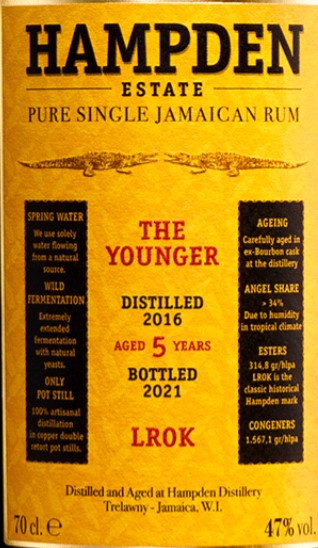 In spite of the “low” congener count, the rum represents itself well, starting with the open, which sports a serious set of sharp, distinct, funky aromas. Rubber, plastic, kerosene, fusel notes…rough and assertive stuff, which is about what we could expect from a youngish rum, tropically aged or not. It turns a little briny, then channels some citrus, flambeed bananas, yeasty bread, overripe pineapples, cherries, bubble gum. There are even some hints of coffee grounds and the metallic tinge of an ashtray that hasn’t been cleaned.
In spite of the “low” congener count, the rum represents itself well, starting with the open, which sports a serious set of sharp, distinct, funky aromas. Rubber, plastic, kerosene, fusel notes…rough and assertive stuff, which is about what we could expect from a youngish rum, tropically aged or not. It turns a little briny, then channels some citrus, flambeed bananas, yeasty bread, overripe pineapples, cherries, bubble gum. There are even some hints of coffee grounds and the metallic tinge of an ashtray that hasn’t been cleaned.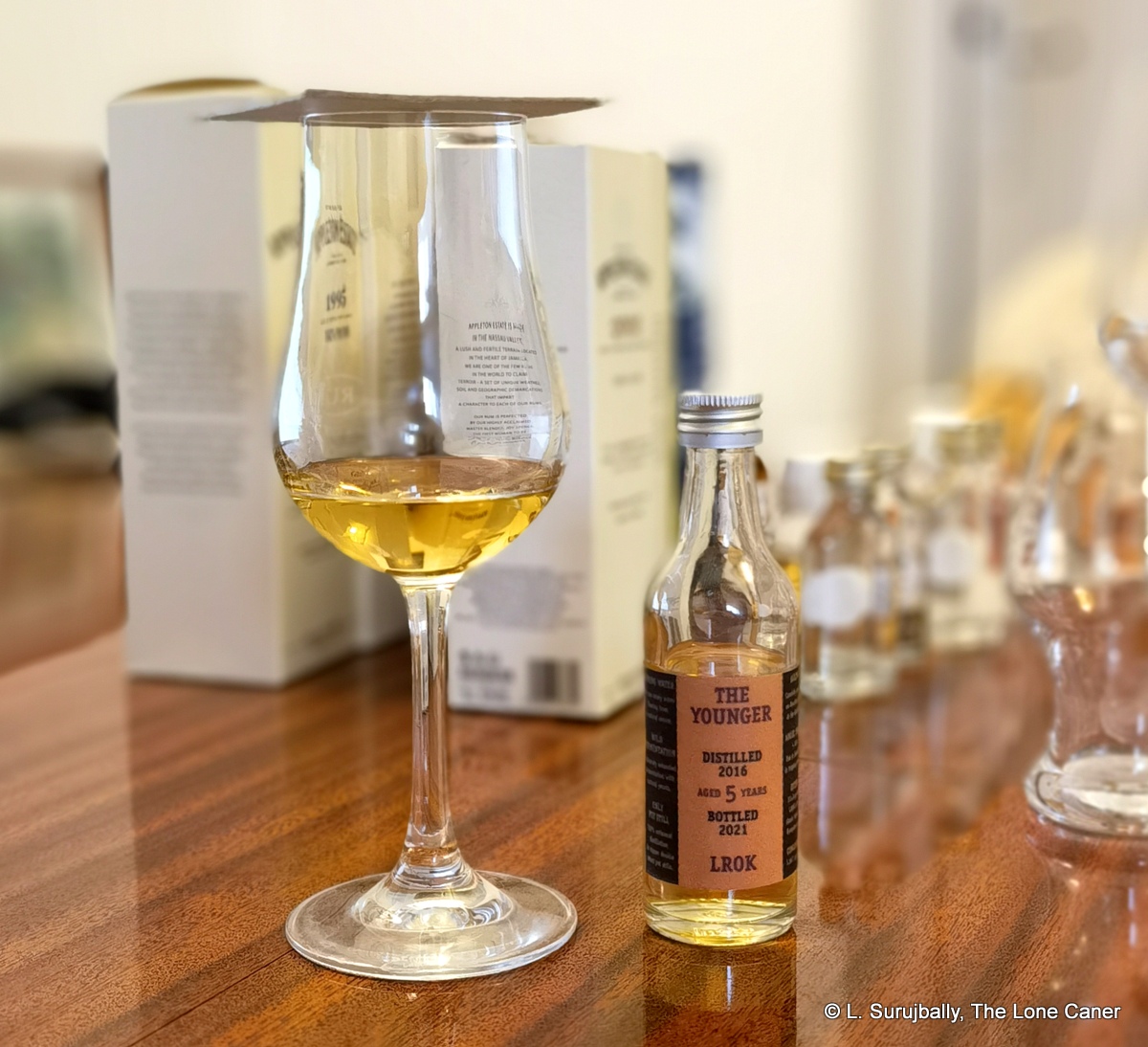
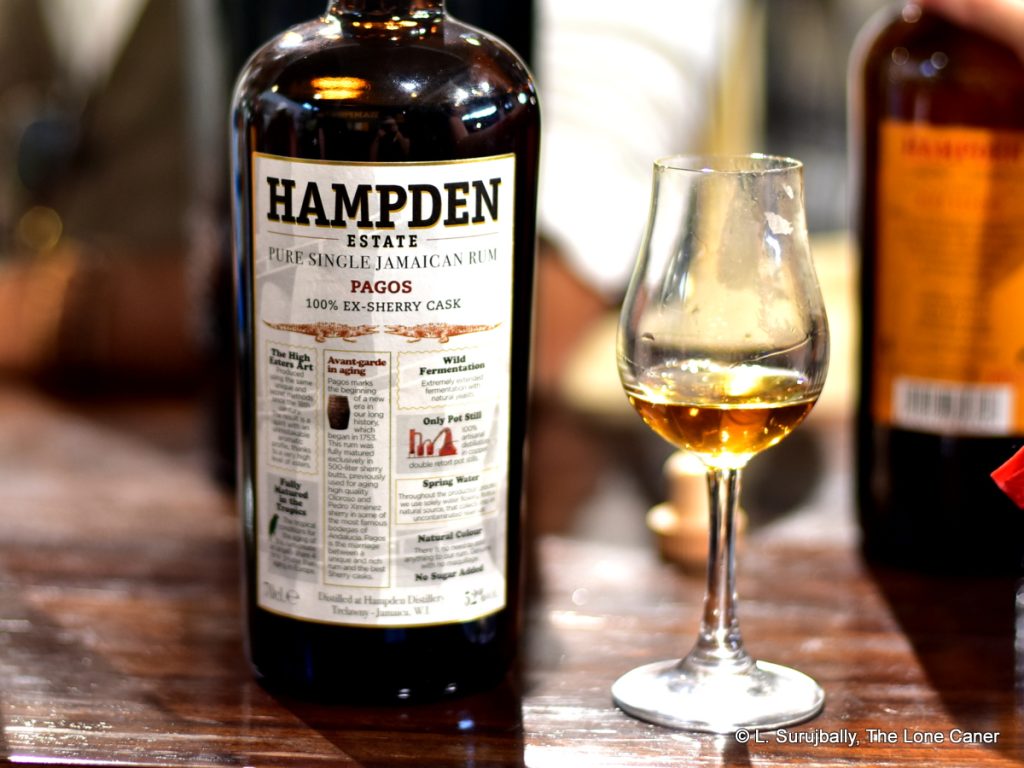
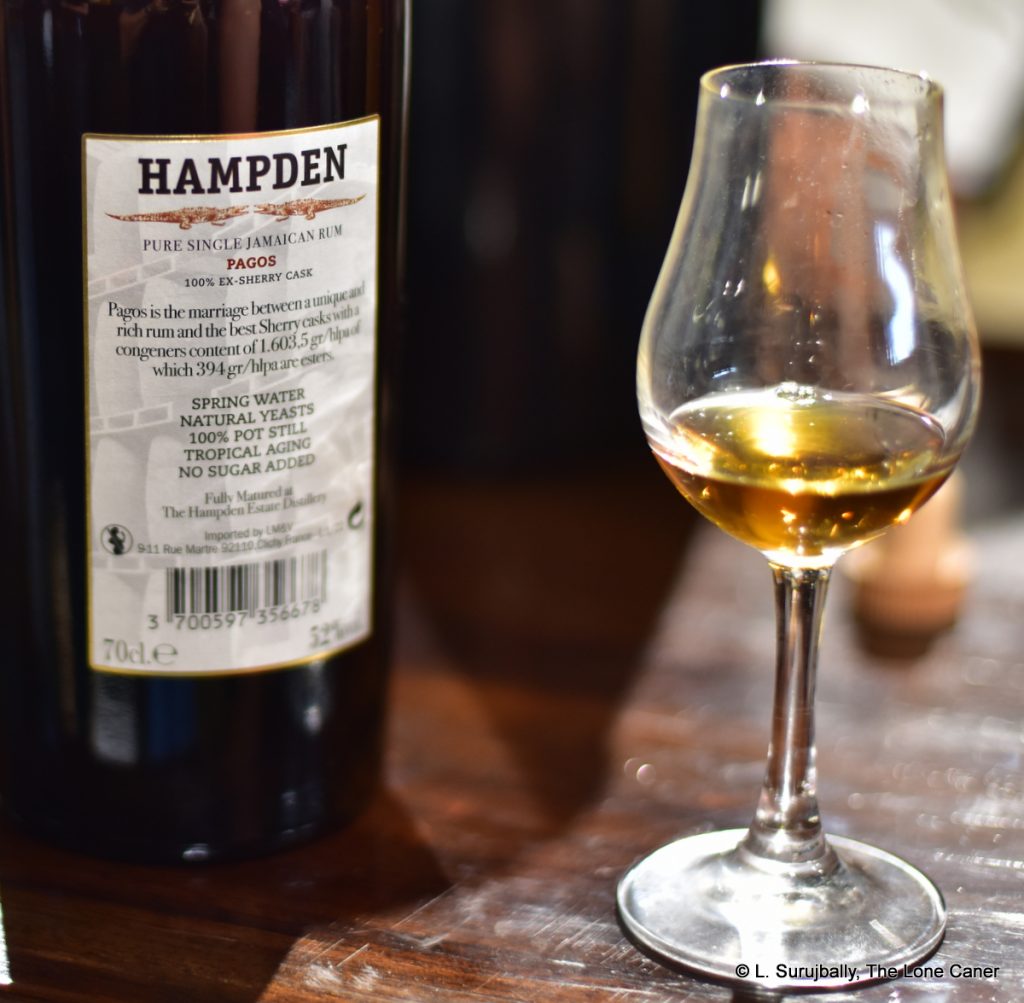
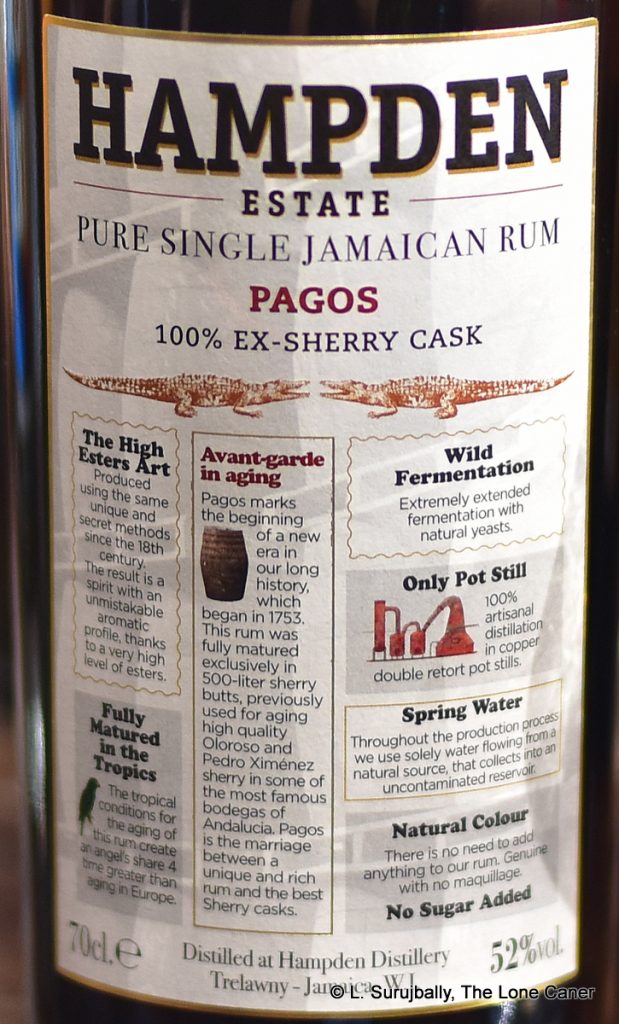
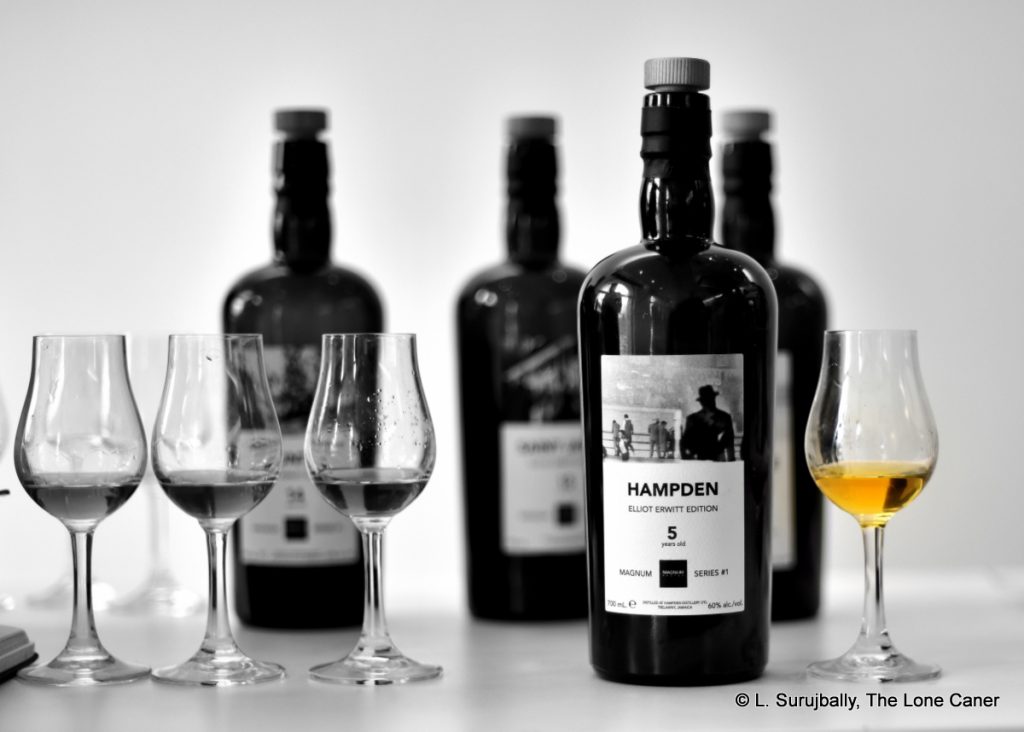
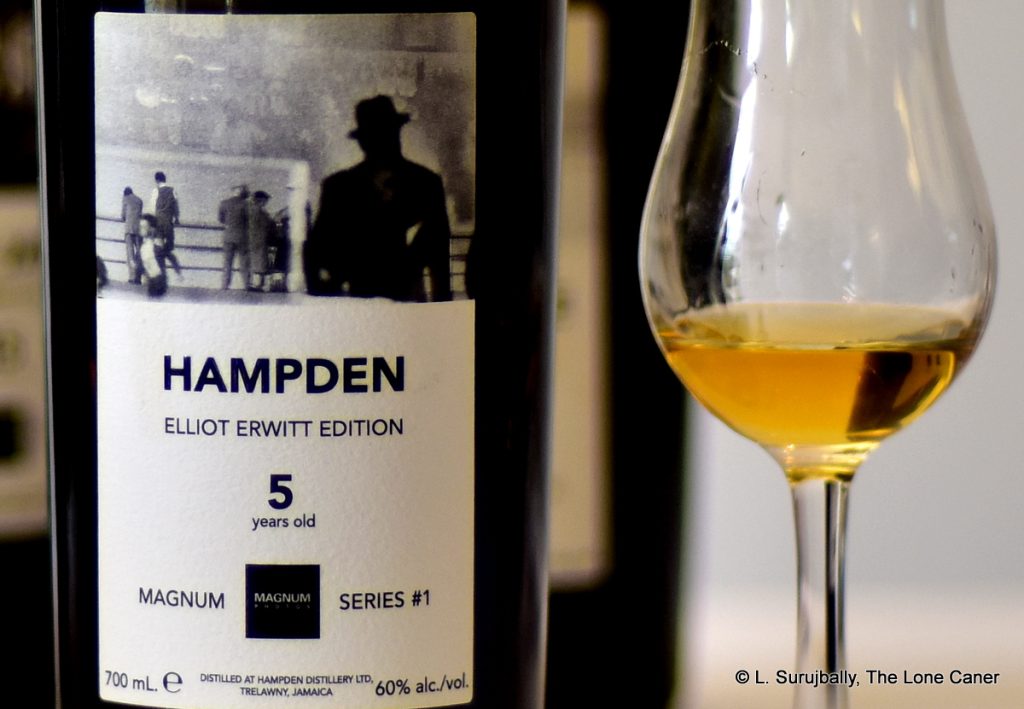


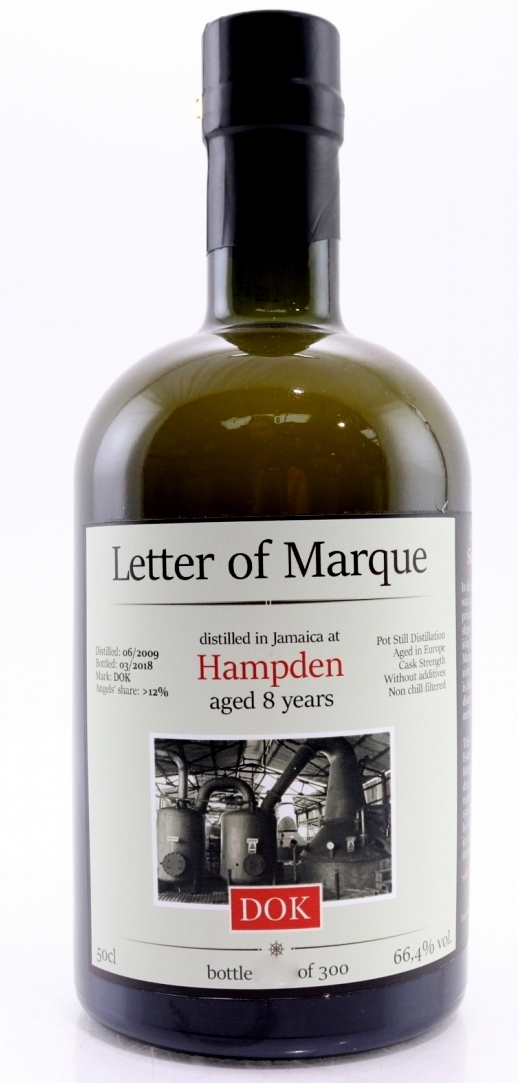

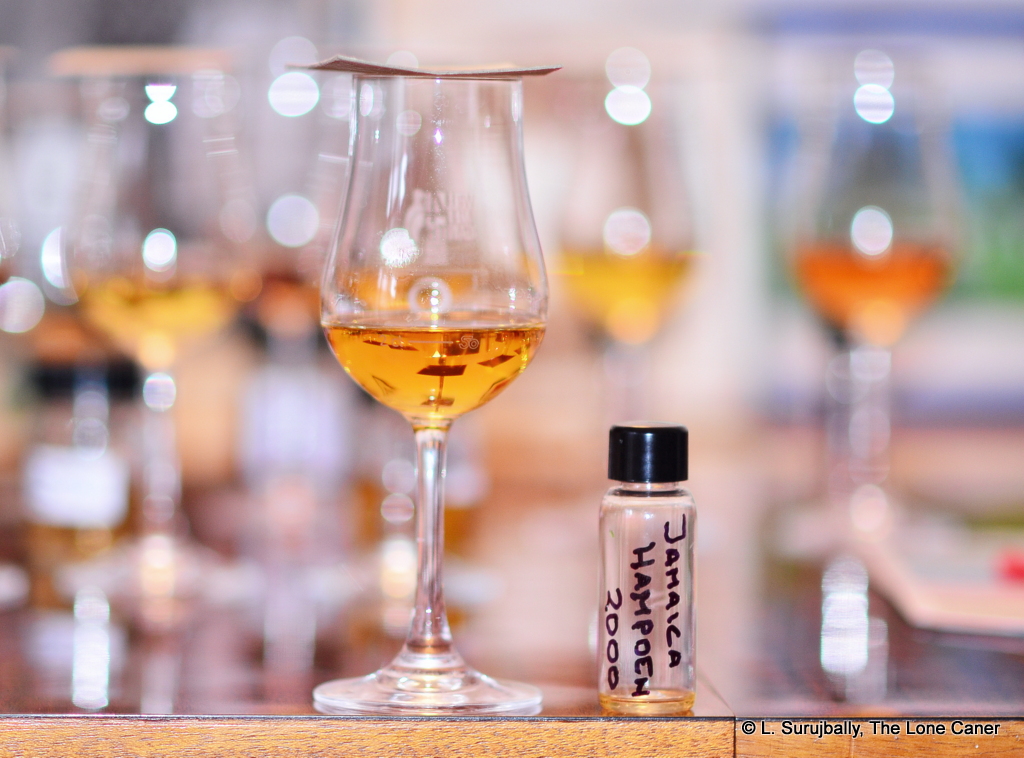

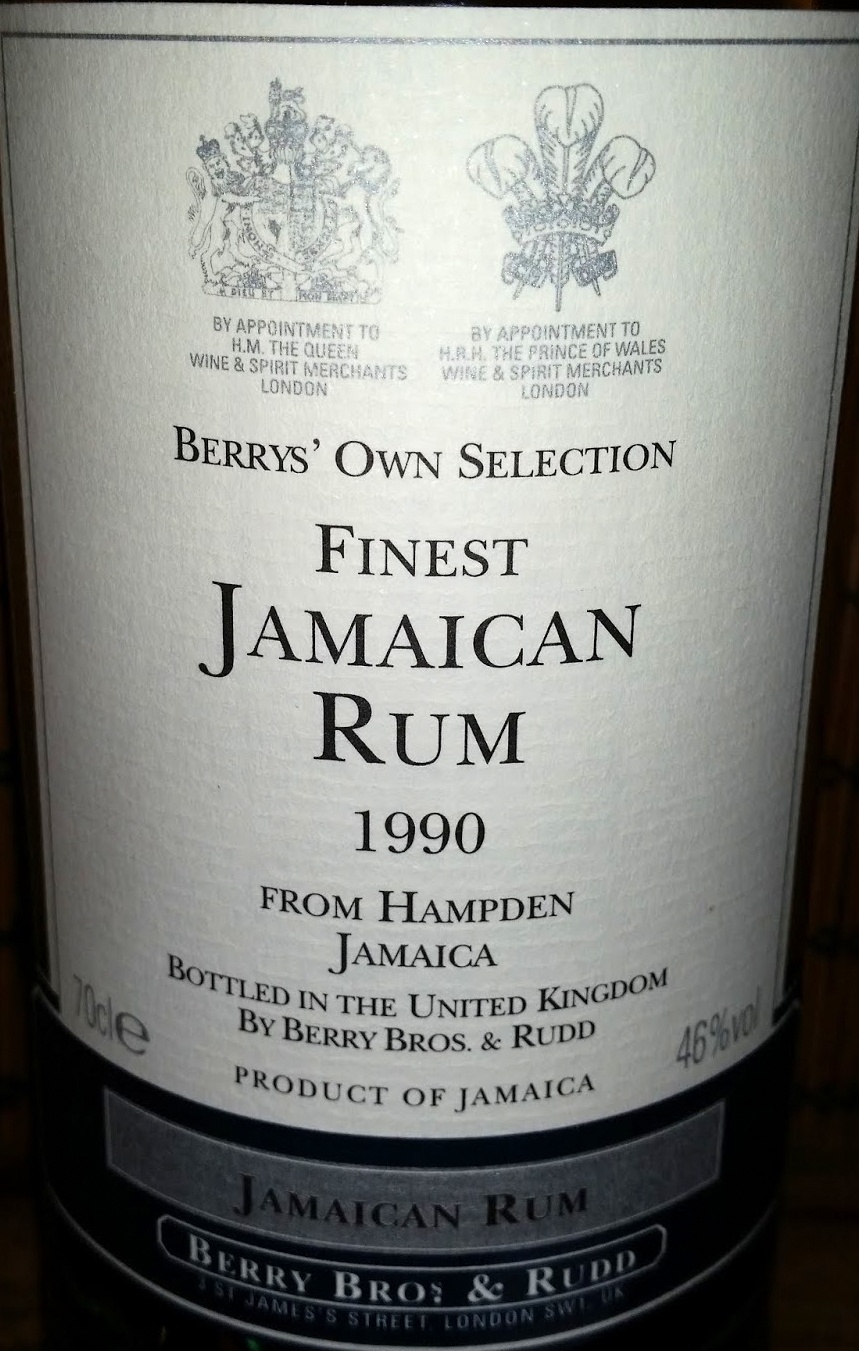

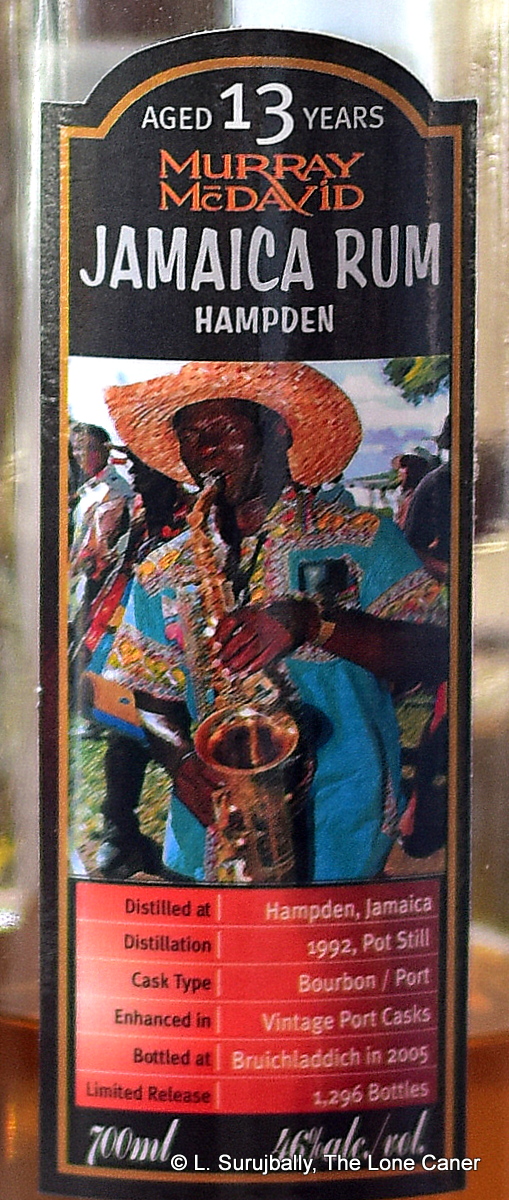 Tasting notes: definitely Jamaican, that hogo and funk was unmistakable, though it seemed more muted than the fierce cask strength Hampdens we’ve been seeing of late. It smelled initially of pencil shavings, crisp acetones, nail polish remover, a freshly painted room and glue. After opening up, I went back some minutes later and found softer aromas – red wine, molasses, honey, chocolate, and cream cheese and salted butter on fresh croissants, really yummy. And this is not to ignore the ever-present sense of fruitiness – dark grapes, black cherries, ripe mangoes, papayas, gooseberries and some bananas, just enough to round off the entire nose.
Tasting notes: definitely Jamaican, that hogo and funk was unmistakable, though it seemed more muted than the fierce cask strength Hampdens we’ve been seeing of late. It smelled initially of pencil shavings, crisp acetones, nail polish remover, a freshly painted room and glue. After opening up, I went back some minutes later and found softer aromas – red wine, molasses, honey, chocolate, and cream cheese and salted butter on fresh croissants, really yummy. And this is not to ignore the ever-present sense of fruitiness – dark grapes, black cherries, ripe mangoes, papayas, gooseberries and some bananas, just enough to round off the entire nose.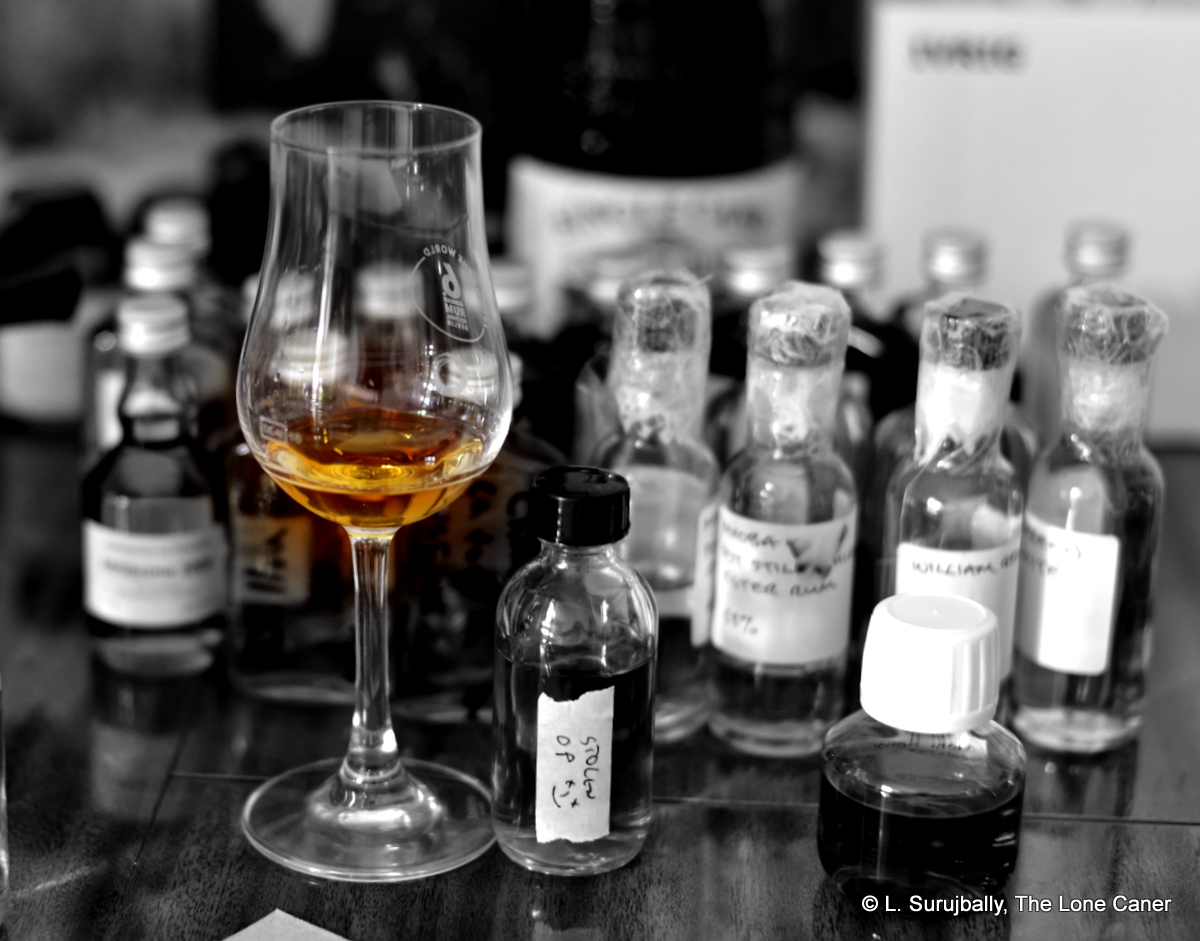
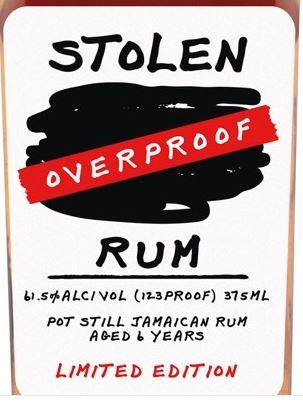
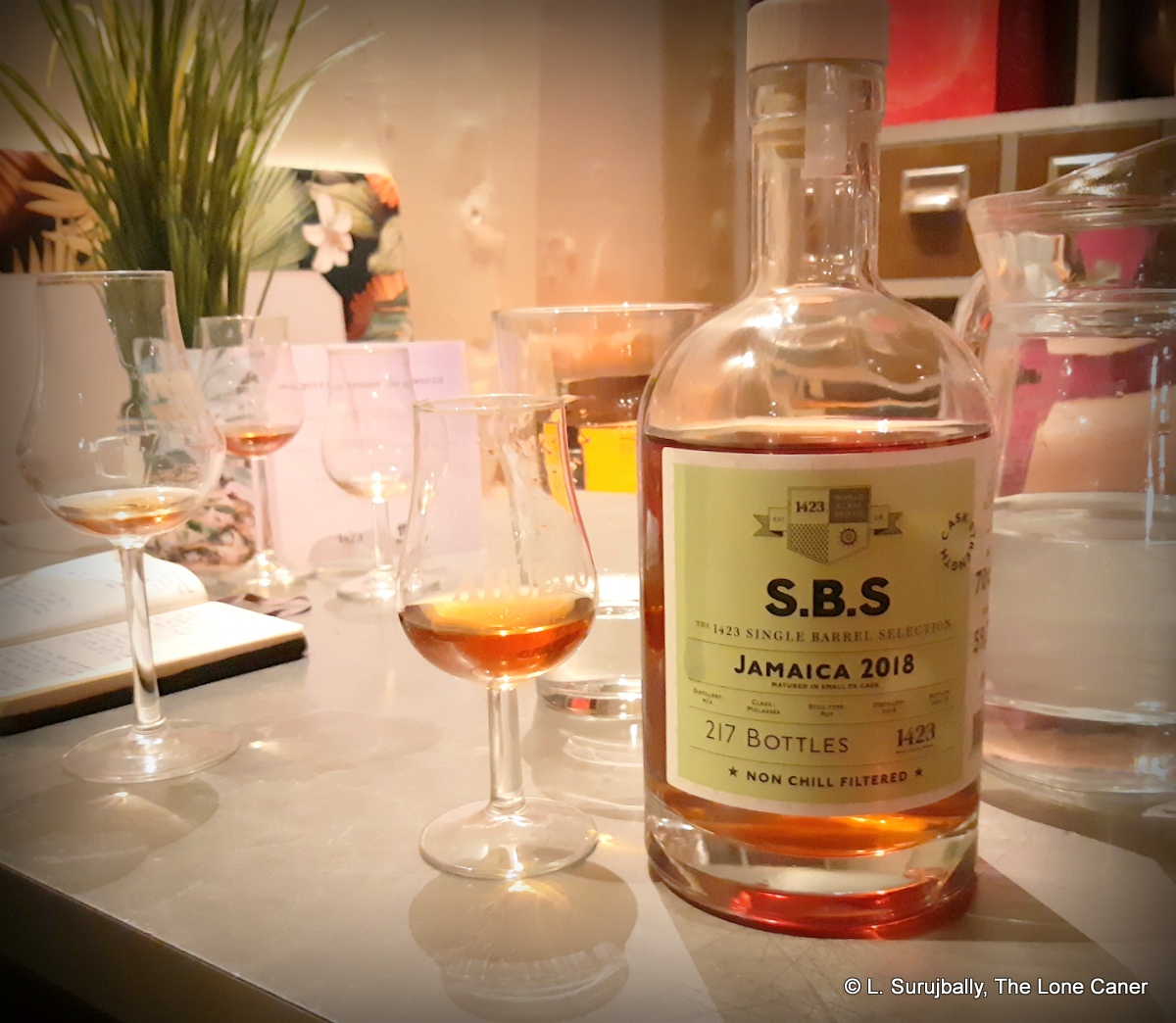
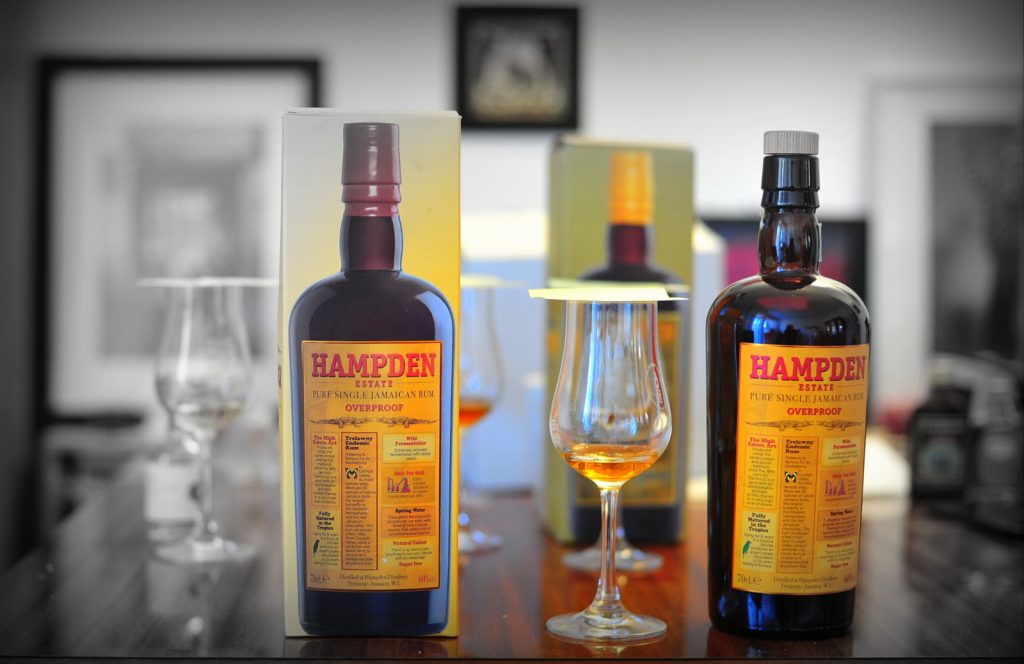
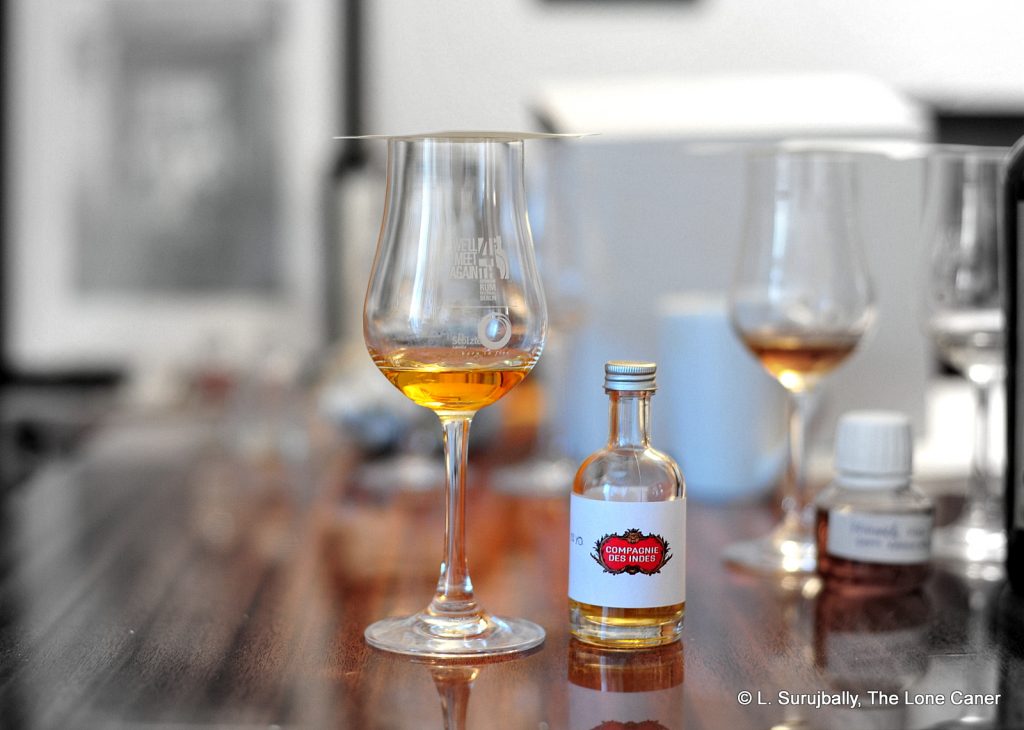
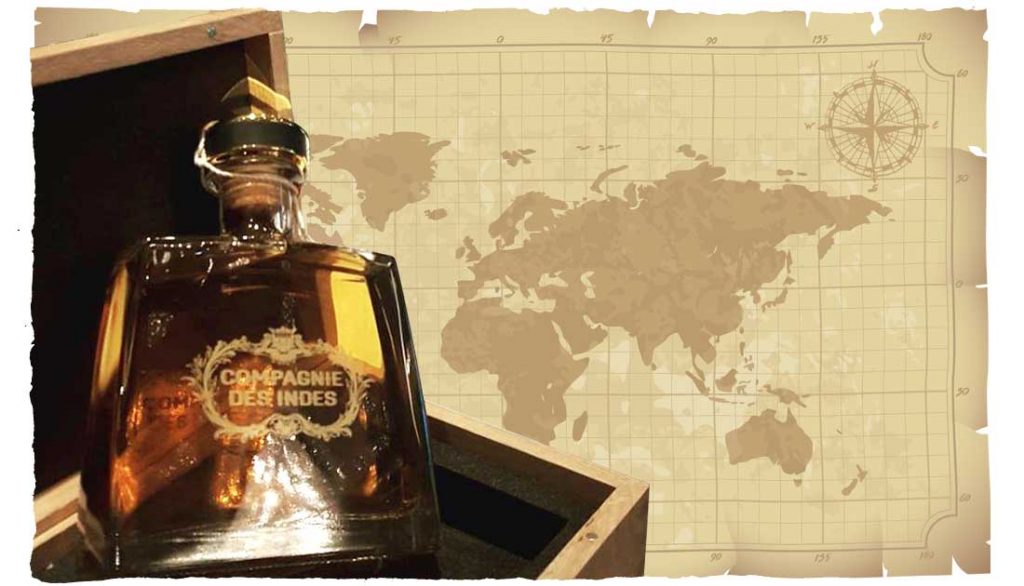
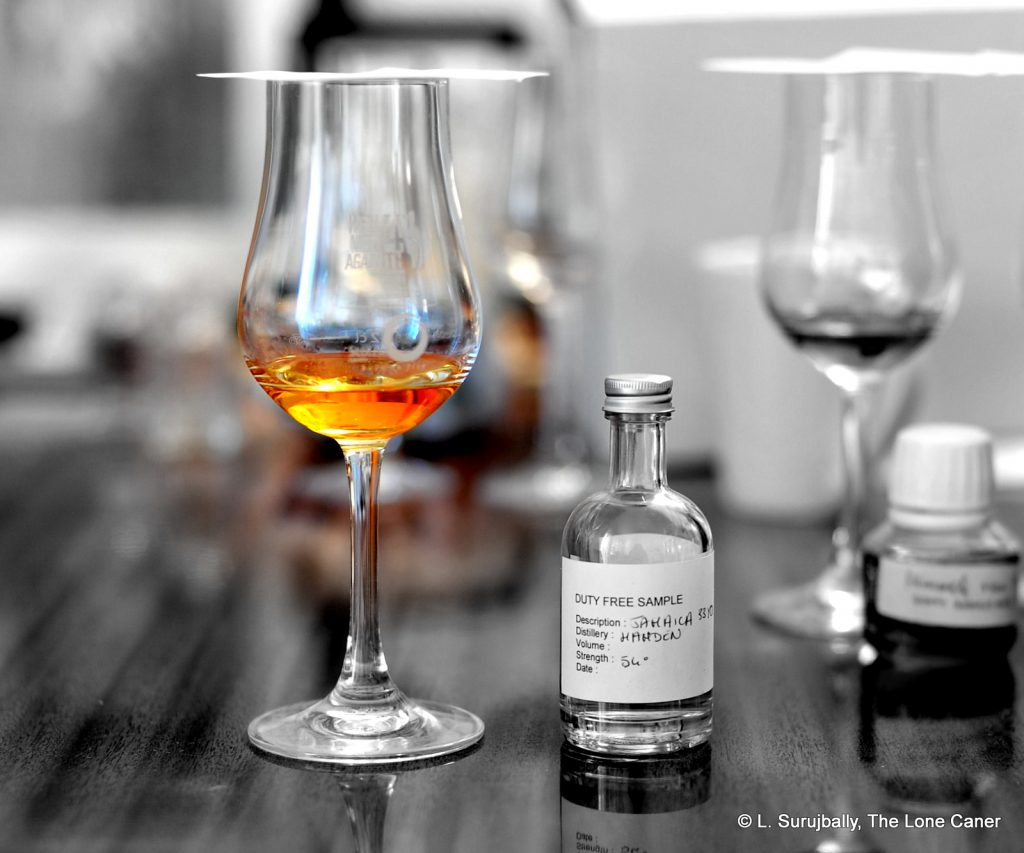
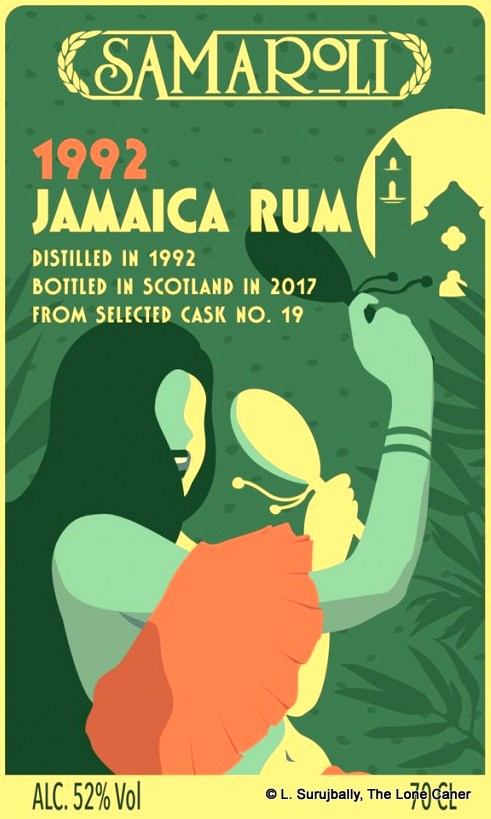
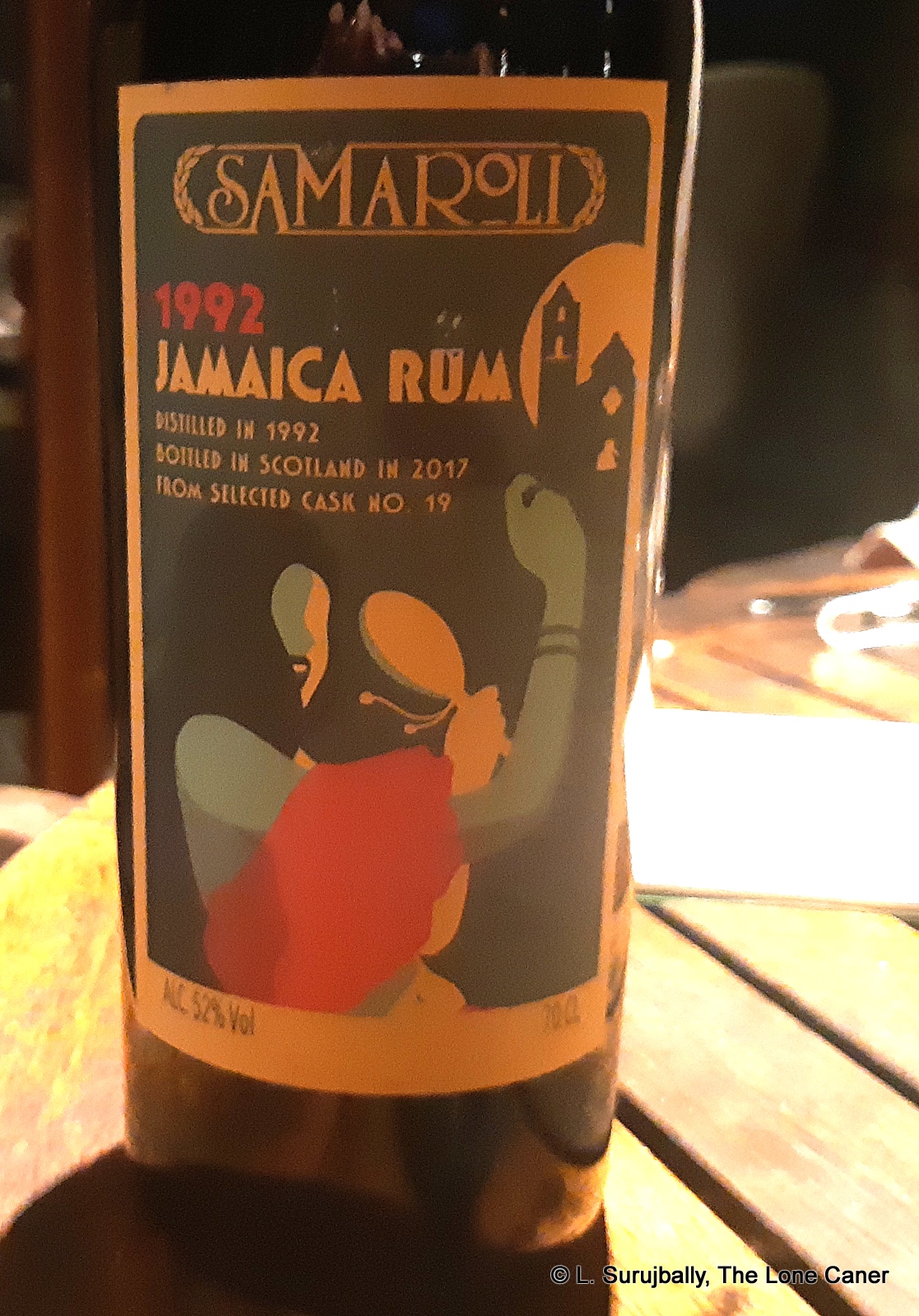 And the taste, the palate, the way it comes together, it’s masterful. At 52% it’s downright near damned perfect – the the balance between mouth puckering citrus plus laid back funk, and easier, softer flavours is unbelievably well done. Soda pop, honey, cereal, red currants, raspberries, fanta and orange zest dance exuberantly cross the tongue, never faltering, never allowing any one piece to dominate. Like an exquisitely choreographed dance number, the molasses, vanillas and fruits (peaches, yellow plums, pears, ripe yellow Thai mangoes) tango alongside sharper notes of citrus, lemon zest, overripe bananas, sandalwood and ginger. Even the finish is spectacular – just long enough, just sharp enough, just mellow enough, allowing each of the individually discerned flavours of fruits, toffee, chocolate and citrus to come out on stage one last time for a bow, before fading back and making way for the next one
And the taste, the palate, the way it comes together, it’s masterful. At 52% it’s downright near damned perfect – the the balance between mouth puckering citrus plus laid back funk, and easier, softer flavours is unbelievably well done. Soda pop, honey, cereal, red currants, raspberries, fanta and orange zest dance exuberantly cross the tongue, never faltering, never allowing any one piece to dominate. Like an exquisitely choreographed dance number, the molasses, vanillas and fruits (peaches, yellow plums, pears, ripe yellow Thai mangoes) tango alongside sharper notes of citrus, lemon zest, overripe bananas, sandalwood and ginger. Even the finish is spectacular – just long enough, just sharp enough, just mellow enough, allowing each of the individually discerned flavours of fruits, toffee, chocolate and citrus to come out on stage one last time for a bow, before fading back and making way for the next one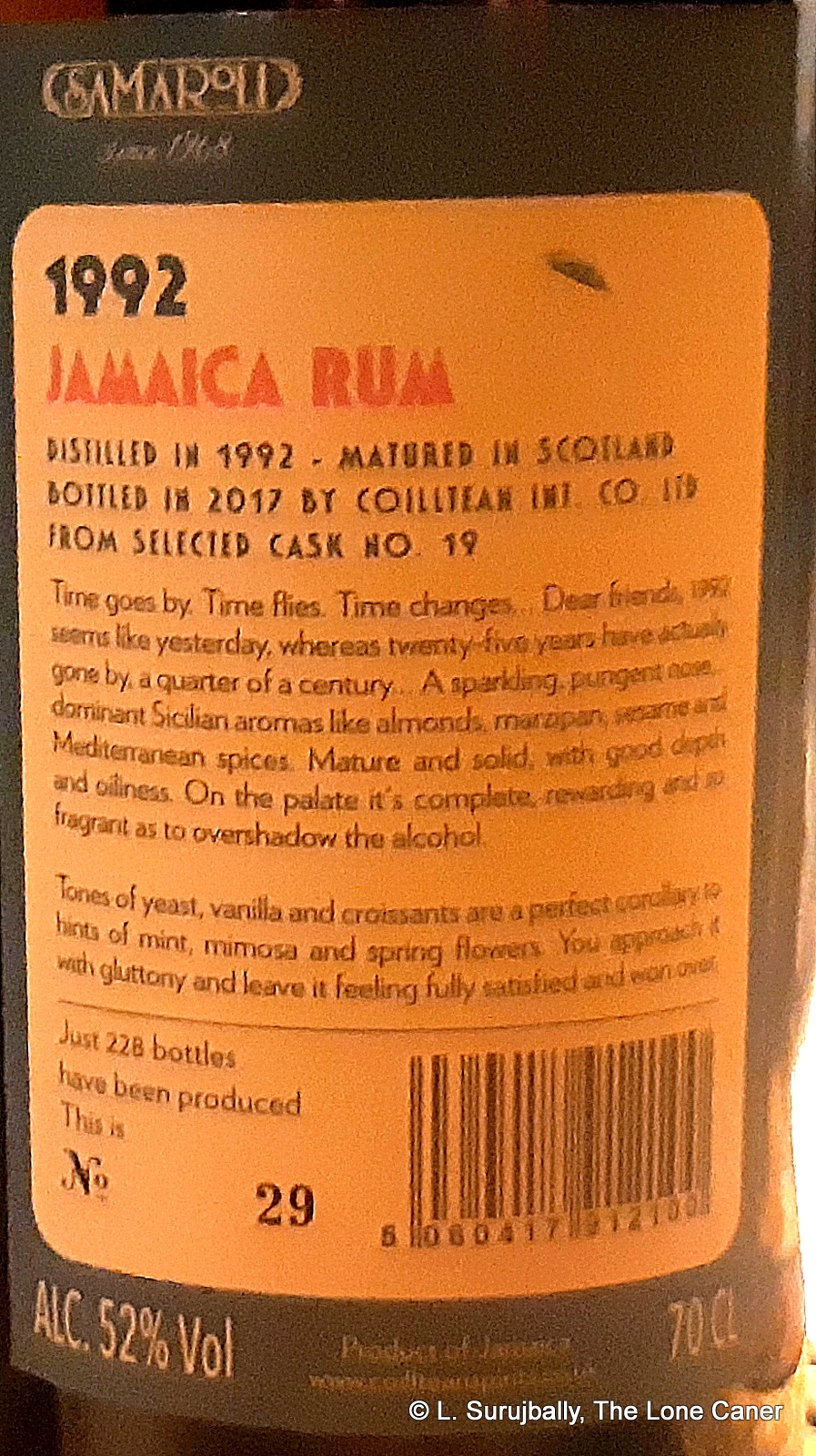 I don’t know what they did differently in this rum from others they’ve issued for the last forty years, what selection criteria they used, but
I don’t know what they did differently in this rum from others they’ve issued for the last forty years, what selection criteria they used, but 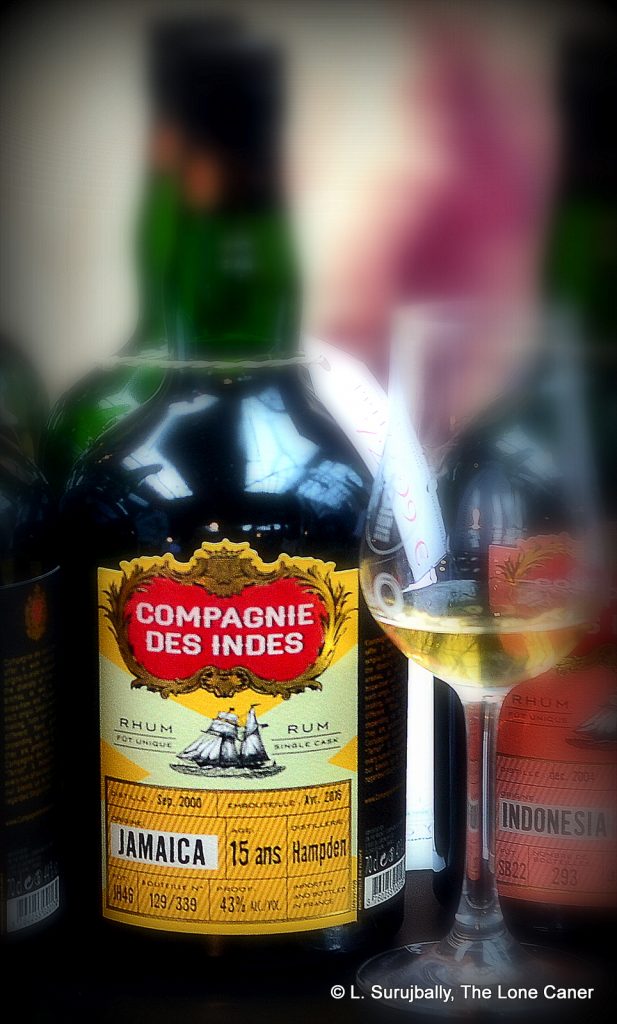
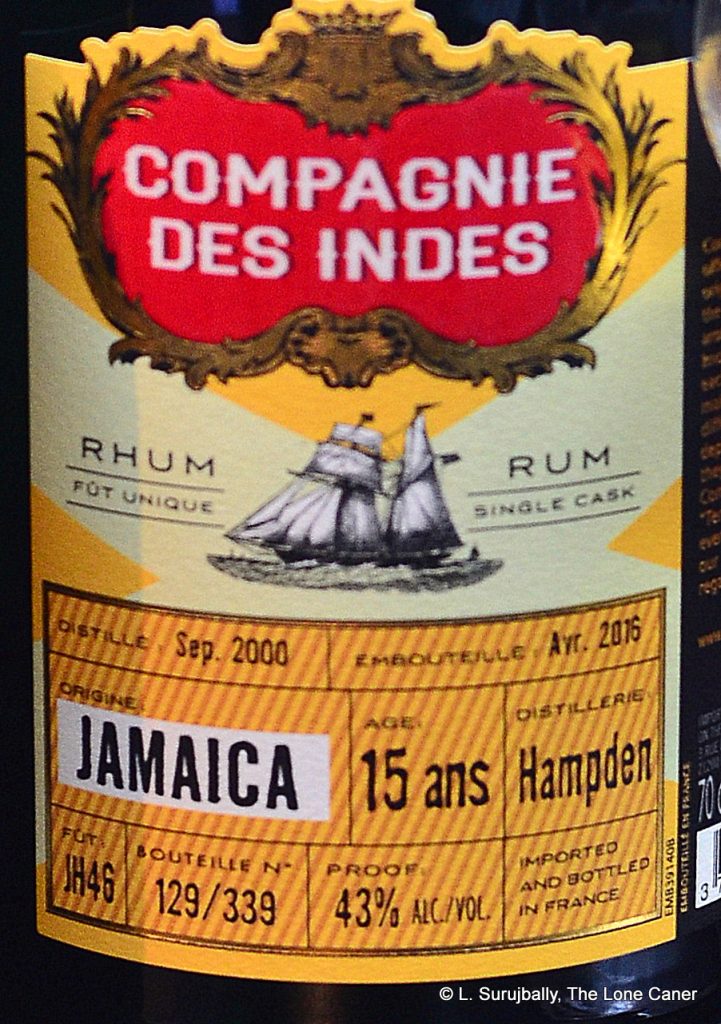 On the palate, I didn’t think it could quite beat out the CdI Worthy Park (which was half its age, though quite a bit stronger); but it definitely had more force and more uniqueness in the way it developed than the Longpond and the Mezans. It started with cherries, going-off bananas mixed with a delicious citrus backbone, not too excessive. After ten minutes or so it opened further into a medium sweet set of fruits (peaches, pears, apples), and showed notes of oak, cinnamon, some brininess, green grapes, all backed up by delicate florals that were very aromatic and provided a good background for the finish. That in turn glided along to a relatively serene, slightly heated medium-long stop with just a few bounces on the road to its eventual disappearance, though with little more than what the palate had already demonstrated. Fruitiness and some citrus and cinnamon was about it.
On the palate, I didn’t think it could quite beat out the CdI Worthy Park (which was half its age, though quite a bit stronger); but it definitely had more force and more uniqueness in the way it developed than the Longpond and the Mezans. It started with cherries, going-off bananas mixed with a delicious citrus backbone, not too excessive. After ten minutes or so it opened further into a medium sweet set of fruits (peaches, pears, apples), and showed notes of oak, cinnamon, some brininess, green grapes, all backed up by delicate florals that were very aromatic and provided a good background for the finish. That in turn glided along to a relatively serene, slightly heated medium-long stop with just a few bounces on the road to its eventual disappearance, though with little more than what the palate had already demonstrated. Fruitiness and some citrus and cinnamon was about it.